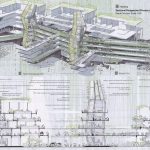-
Mexican Architect Ricardo Legorreta Passes Away
January 2012
Acclaimed for projects such as the Children’s Discovery Museum in San Jose – entered through a 54-foot-high purple pyramid, Pershing Square in Los Angeles, and the Metropolitan Cathedral of Managua, Architect Ricardo Legorreta has died at the age of 80 subsequent to battling cancer.
The 2011 Praemium Imperiale Laureate has been celebrated across the world for his colourful compositions and consistently creative architectural designs. A quote from the great architect on the Legorreta + Legorreta website reads: “Life is like the waves: to be respected and loved, studied and not fought against. We must turn them to our benefit in order to reach our goals.”
Ricardo Legorreta is the most distinguished Mexican architect of his generation. With its extensive fountain courtyards and large brightly coloured, plastered walls and columns, the Camino Real Hotel in Mexico City (1968) established Legorreta’s reputation as one of the few architects capable of taking the abstract, vernacular manner of Luis Barragan from a domestic to a monumental scale.
There soon followed one megaform structure after another: the Camino Real Hotel, Cancun (1975), the Renault Factory, Durango (1978-84), the Camino Real Hotel, Ixtapa (1981), the Solana IBM Campus, near Dallas (1988), and the Managua Cathedral (1994). With over eighty works to his credit in some thirty-five years of practice, his buildings are not only conceived as landscape forms they also often comprise hedonistic enclaves that seem readily accessible to society at large.













